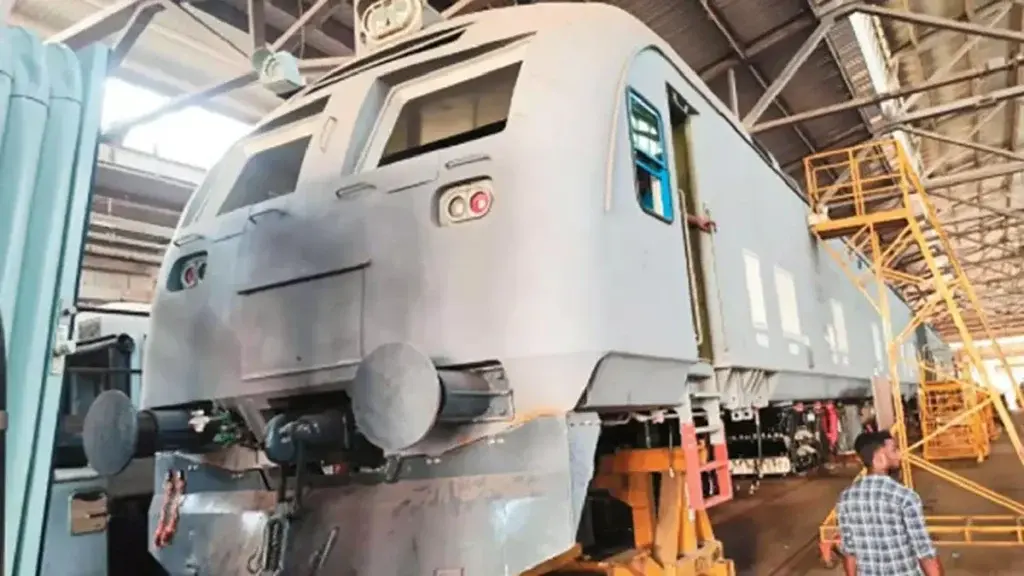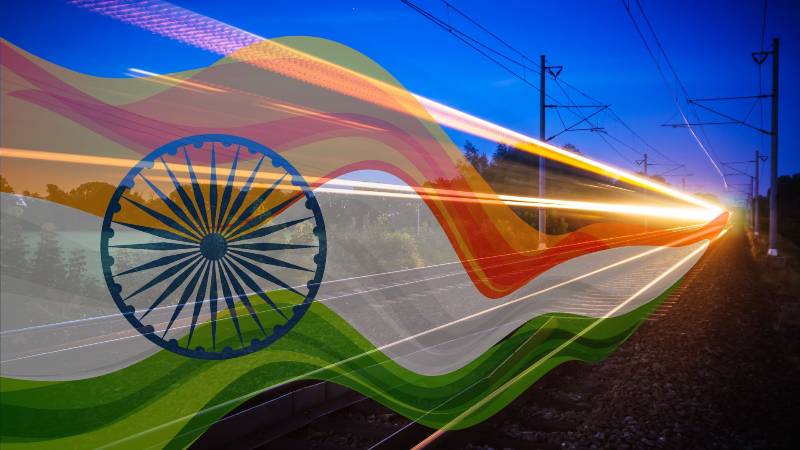India has taken a historic leap in the clean energy transition by successfully testing the world’s most powerful hydrogen-powered train. Developed indigenously by Indian Railways, this advanced "Driving Power Car" was trialed at the Integral Coach Factory (ICF) in Chennai.
With this milestone, India not only joins the ranks of hydrogen train pioneers like Germany and China but surpasses them in power output and coach capacity, marking a significant moment in the nation’s journey toward sustainable and self-reliant rail infrastructure.
Unveiling the Green Giant
What sets this hydrogen train apart isn’t just its clean energy credentials, but the sheer engineering might behind it. Fitted with a 1,200 horsepower (HP) hydrogen fuel cell engine, this is the most powerful hydrogen train in the world today, outclassing international models that typically range between 500 and 600 HP. Developed entirely in India, the engine represents a triumph of indigenous innovation and a bold stride toward Atmanirbhar Bharat in clean transport tech.
In terms of design, India’s hydrogen train carries ten coaches, doubling the standard five-coach configuration seen in global counterparts. This expanded capacity will allow it to serve a significantly larger number of passengers, making it more viable for commercial routes in a populous country.

What Makes Hydrogen Trains Critical Today
Hydrogen-powered trains solve multiple challenges that conventional systems cannot. As part of India’s climate goals, the Indian Railways is aiming for net-zero carbon emissions by 2030, and hydrogen locomotion is central to that mission.
Here’s why hydrogen trains matter:
- Zero Emissions: Powered by hydrogen fuel cells, the train emits only water vapor and heat. This makes it a true zero-emission alternative to diesel engines, which are still widely used across India's non-electrified routes.
- Noise Reduction: With no combustion engine, hydrogen trains are significantly quieter, improving the quality of life for people living near train lines.
- Fuel Flexibility: Hydrogen trains are ideal for non-electrified routes, especially in mountainous and remote regions, where building overhead electric lines is not feasible or cost-effective.
- Energy Security: Producing hydrogen locally reduces dependency on imported fossil fuels, making it a strategic asset for India’s energy independence.
The “Hydrogen for Heritage” Vision
India's hydrogen rail push is more than just a technological upgrade, it's part of a larger vision. Under the “Hydrogen for Heritage” program, the Ministry of Railways has committed ₹2,800 crore (approx. $337 million) to develop 35 hydrogen-powered trains.
The first route for deployment is the Jind-Sonipat corridor in Haryana. Chosen for its manageable distance and accessibility, it serves as a prototype for rolling out hydrogen trains across other heritage and regional routes across the country.
Challenges on the Horizon
While the debut of this hydrogen train is a milestone, scaling the technology across India presents several challenges:
- Green Hydrogen Supply: The success of hydrogen railways hinges on the production of green hydrogen—hydrogen created from renewable energy sources like solar and wind. Currently, a large portion of the global hydrogen supply is still derived from fossil fuels.
- Infrastructure Gap: India will need to rapidly build hydrogen production units, storage facilities, and refueling stations across the country which is a complex and capital-intensive process.
- High Initial Costs: Hydrogen trains are costlier to build and operate compared to diesel counterparts. However, like with most emerging tech, costs are expected to decline as mass production scales and economies of scale kick in.
A Global Benchmark in Green Rail
By delivering the most powerful hydrogen engine in the world, India has positioned itself ahead of countries like Germany (Alstom’s Coradia iLint) and China, which have made headlines for their hydrogen-powered trains in recent years. Unlike earlier models, India's train brings together scale, power, and affordability, factors that are crucial for deployment in the developing world.
Railway Minister Ashwini Vaishnaw hailed the development as “a landmark moment towards building a future-ready and sustainable India.” His remarks reflect a broader governmental push to make Indian Railways a global standard for sustainable, efficient, and technologically advanced transport systems.
The Road Ahead
India’s hydrogen train trial isn’t just about testing a new mode of transport but it’s about testing a vision. A vision where clean energy, indigenous innovation, and smart infrastructure converge to redefine mobility for the world’s most populated democracy.
As countries around the world search for cleaner alternatives to diesel and coal-powered transport, India’s success with hydrogen rail could serve as a powerful model. With the right policies, investment in green hydrogen infrastructure, and international collaboration, this could be the beginning of a global hydrogen-powered transport revolution, led from the front by India.


Discussion
Start the conversation
No comments yet
Be the first to share your thoughts on this article. Your insights could spark an interesting discussion!